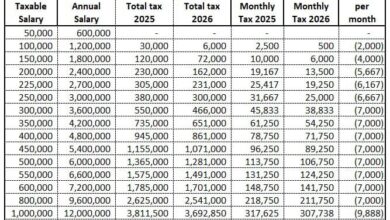Understanding the G7 Countries
Contents
Understanding the G7 Countries: A Comprehensive Overview
The Group of Seven (G7) is an intergovernmental organization comprising seven of the world’s most advanced economies. Established to foster cooperation on economic, political, and social issues, the G7 plays a pivotal role in shaping global policies. This article delves into the G7’s composition, objectives, historical significance, and contemporary relevance.
What is the G7?
The G7 is a forum of seven nations with significant economic power and influence. It originated in the 1970s amid global economic challenges, such as the oil crisis, to coordinate economic policies. Unlike formal institutions like the United Nations, the G7 operates informally, with annual summits where leaders discuss pressing global issues.
- Purpose: Facilitate dialogue on economic governance, climate change, security, and global health.
- Membership: Canada, France, Germany, Italy, Japan, the United Kingdom, and the United States.
- Non-membership: No formal membership process; the European Union participates as a guest.
Historical Background
The G7 began as the Group of Six (G6) in 1975, with Canada joining in 1976 to form the G7. Russia was included from 1998 to 2014, creating the G8, but was suspended following its annexation of Crimea. The G7 has since reverted to its original seven members.
- Key Milestones:
- 1975: First summit in Rambouillet, France.
- 1985: Plaza Accord to manage currency exchange rates.
- 2008: Coordinated response to the global financial crisis.
- Evolution: Expanded focus from economics to include climate, health, and geopolitical stability.
G7 Membership and Economic Influence
The G7 countries represent a significant portion of global GDP, trade, and technological innovation. Below is a table summarizing key economic indicators for G7 nations (approximate data as of 2025):
| Country | GDP (Trillion USD) | Population (Million) | Key Economic Strength |
|---|---|---|---|
| United States | 25.5 | 340 | Technology, Finance |
| Japan | 4.2 | 125 | Manufacturing, Electronics |
| Germany | 4.0 | 84 | Engineering, Automotive |
| United Kingdom | 3.2 | 67 | Finance, Services |
| France | 2.8 | 65 | Aerospace, Luxury Goods |
| Italy | 2.0 | 60 | Fashion, Automotive |
| Canada | 2.0 | 40 | Natural Resources, Energy |
- Collective Impact: G7 nations account for roughly 40% of global GDP and 10% of the world’s population.
- Leadership Role: Host country rotates annually, setting the summit agenda.
Key Objectives and Focus Areas
The G7 addresses a wide range of global challenges through collaborative efforts. Recent summits have emphasized:
- Economic Stability: Coordinating fiscal and monetary policies to prevent global recessions.
- Climate Change: Committing to net-zero emissions and funding green initiatives.
- Global Health: Strengthening pandemic preparedness post-COVID-19.
- Geopolitical Security: Addressing conflicts, such as those in Ukraine and the Middle East.
- Digital Transformation: Promoting ethical AI and cybersecurity standards.
Achievements and Criticisms
The G7 has made significant contributions but faces criticism for its exclusivity and effectiveness.
- Achievements:
- Debt relief for developing nations in the 2000s.
- Coordinated sanctions against Russia post-2014.
- Climate finance pledges, such as the $100 billion annual commitment to developing nations.
- Criticisms:
- Limited representation of emerging economies like China and India.
- Slow implementation of commitments, particularly on climate goals.
- Perceived elitism, prompting calls for broader forums like the G20.
FAQs About the G7
Q1: How is the G7 different from the G20?
A: The G7 focuses on advanced economies and operates informally, while the G20 includes emerging economies like China and India and has a broader membership.
Q2: Why was Russia removed from the G8?
A: Russia was suspended in 2014 due to its annexation of Crimea, which violated international law.
Q3: Can other countries join the G7?
A: There is no formal process for joining; membership is based on economic and political alignment.
Q4: What is the role of the EU in the G7?
A: The EU attends as a non-enumerated member, contributing to discussions but not hosting summits.
Q5: How are G7 decisions enforced?
A: G7 decisions are non-binding; compliance relies on member countries’ goodwill and domestic policies.
Conclusion
The G7 remains a vital platform for addressing global challenges, leveraging the economic and political clout of its members. While its achievements in economic coordination and crisis response are notable, criticisms highlight the need for greater inclusivity and accountability. As the world faces complex issues like climate change and geopolitical tensions, the G7’s ability to adapt and collaborate with broader forums like the G20 will determine its future relevance.
g7 countries
g7
g7 countries list
g 7 countries
iran time now
trump
us
as







